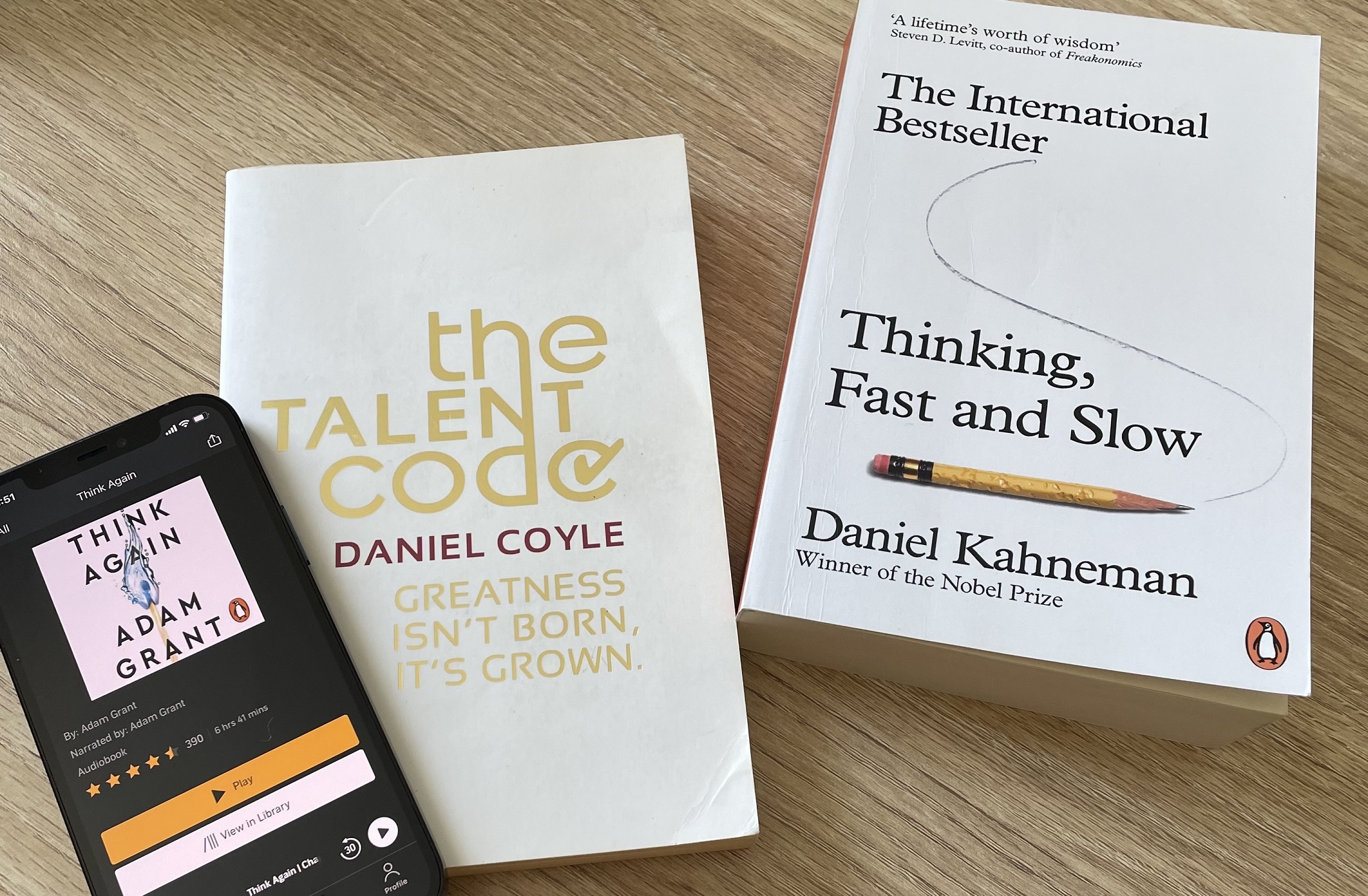Whenever I’m asked about recommended reading for the Black Belt in Thinking (BBIT) course, the discussion always draws interest from anyone within earshot on a course or at a meeting. Usually, the question comes as a preparation for the course or as ongoing learning post-course.
My recommended reading isn’t like a reading list for a university course; none of these books will help you to use the tools themselves more productively or give you more detail into how to technically use them. Unquestionably the very best place to learn about these tools and how to apply them is a Black Belt in Thinking course. I don’t say that because I teach it, I say that because it was built to be that way and after hundreds of participants and years of tweaks and updates it is as fresh and relevant as ever!
The books recommended here are to give you a deeper and broader understanding of the important thinking concepts and skills that are learned through the tools of the course. The tools are the overt benefit of the BBIT, but the deeper value comes from the changes in the way we think and the way we see the world. These books complement the course. They are in no particular order; instead, I have summarised the key benefits that complement the thinking concepts of the BBiT. Also, there are also only three books (and a bonus book). I will do a follow-up to this in the future, but these are the top three and to add more would distract from these three and their critical concepts. Collectively these three cover the What, the How, and the Why of learning, understanding, and mastering use of the BBIT tools.
Thinking, Fast and Slow – Daniel Kahneman
The What
Kahneman introduces and details the two different thinking systems our brains employ -the fast brain that makes our knee jerk or automatic decisions, and the slow brain that is analytical and considers situations more carefully. The BBIT is all about having the right processes to force us to engage our slow brain so we can correctly analyse and solve important issues.
Fast Brain and Slow Brain
Almost all our decisions are made without thinking, we walk to the tap and pour a glass of water, and head back to our desk with an almost empty glass. How did that happen? We don’t even remember drinking the water, we were so absorbed in the conversation playing through our headphones of a meeting or podcast. This is the fast brain, and it is fantastic, allowing us to use minimal focus and minimal energy to complete many tasks. We can answer a question from a colleague, shoot an email off to a customer, or decide on an order from a supplier based on similar past decisions. Of course, the dark side of this is doing all those things without thinking, when we really should be; the question from a colleague was more detailed than we thought, the customer now has a band-aid solution to their problem, and the supplier’s order won’t actually be fit for what we need this time.
Enter Slow Brain, which doesn’t sound like the hero -who wants to think slowly? Turns out we do, in the cases above at least. Less of a hero and villain, more of using the right tool for the job, we want to be able to engage the supercomputer when we need it. Kahneman refers to the processes (they are not literally two different brains, of course!) as System 1 (fast) and System 2 (slow) for perhaps this reason.
The book goes into quite detailed analyses of both how the two Systems work, and all the studies and research done to identify and verify the differences in the systems. Once Kahneman has clearly established the differences and how they work, the focus is on traps we fall into when we let System 1 make decisions that should be handled by System 2.
Personally, and with many others I know in the critical thinking and problem-solving space, this is the best book there is to read, although fair warning some find it fairly heavy in parts and it is more academic than ‘business’.
You will get a comprehensive and hugely credible understanding of What the BBIT tools and concepts are doing to benefit our thinking and problem-solving.
The Talent Code – Daniel Coyle
The How
How the brain learns and develops skills, to the point of extreme skill (what some would call talent). This is the link between the overt tools and the change in the way we think, accelerating the right kind of thinking and problem-solving in our brains.
This book gave me an incredible understanding of the ‘how’ of learning. Myelin is essentially the magic stuff that builds our skills, the real biology behind muscle memory. As we learn and practice skills Myelin (a fatty substance) is laid down like insulation on the connections in the brain, this has the effect of accelerating the transmission speed of the electrical impulses in our brains. This has two important elements: firstly, understanding how we build the skills we have; but more importantly for learning new things/changing what we do. If we have done something one way for years, that is a well-Myelinated connection and change is hard because we are trying to move from a “well-trodden” track to a newly-created one.
Of course, the answer is that we need to Myelinate the new connections and to do that we must do the new thing more. This is where the real benefit of this book comes through, it’s not just doing something more that lays Myelin down, but how we do it. For example, Coyle focuses on ‘Deep Practice’ as the ideal learning state. This is where we are right at our limit, in fact right on the verge of failing and tipping over to actually fail. Once failed, we try again with renewed intensity and succeed. This is the fastest and most effective way to build Myelin (although not the easiest or most fun of course).
Learning the BBiT tools is only the first step. Once the course is over you will need to use the tools, to build the habits (Myelinate the new connections) to get the benefits of the techniques you have learned.
Think Again – Adam Grant
The Why
Possibly the most important thing we learn from the BBIT is reconsidering and being critical of the assumptions we make about how things are (critical thinking), although almost no one signs up for that. This book is focused on the same subject, rethinking as Grant calls it.
The focus of this book is most aligned with what you will learn/have learned at BBIT; the research presented makes it close to a marketing brochure for learning the skills and tools of the course. This is the lightest reading of the books included here, each section beginning with a true story with a few key facts omitted, followed by an explanation (backed with plenty of references to the research), and concluding with those key facts that emphasise the core moral of the story with the argument in the explanation.
This format makes it both a fascinating read and an entertaining one. More than that it is a very effective format to bring home the points. Reading this in mid-2021 after years of using and teaching the tools, it has been both interesting and validating to know all this stuff is backed by research, and just how much research. We know anecdotally (if over 500 people using the tools and getting the purported benefits is anecdotal) these approaches work!
Where to start?
Assuming the description alone isn’t enough to sway you, I can give you some advice based on how far along the BBIT path you are. Of course, the purpose of this article is to convince you to read all three books.
Not yet signed up? – Think Again (the Why). The concepts in this book will give you a really good appreciation for the importance of challenging what we think about how things are, and the benefits of choosing a questioning and inquisitive mind over a defensive one. Reading this, then doing the course to develop your skills is a logical sequence.
Signed up? – Thinking, Fast and Slow (the What). Having an understanding of the two Systems, particularly how we fall for using System 1 effectively links what we learn in the course to how your brain really works. I read this book years after learning the BBIT tools, and had a satisfying click in my head as I read it.
Completed the course? – Talent Code (the How). Learning the most effective way to build the skills you just learned of course makes sense. Secondly, understanding the benefit of struggle really helps to push through the tougher early stages of using the tools to solve those gnarly problems.

